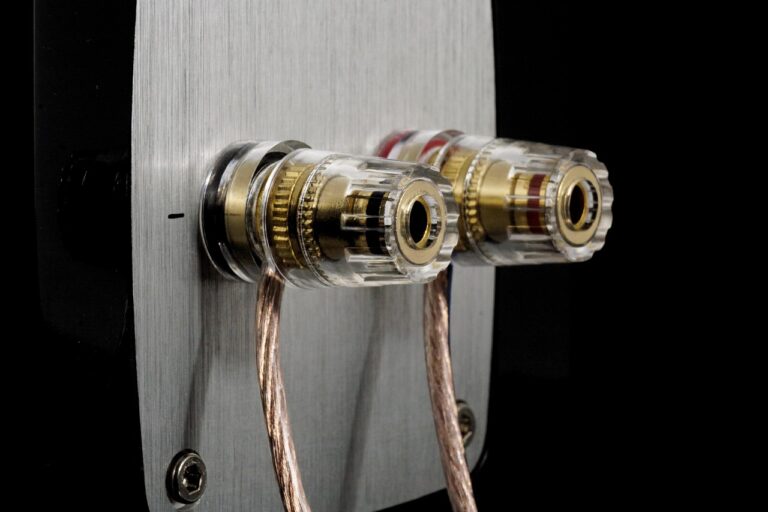When it comes to audio equipment, one of the most debated topics is the effect of speaker cables on sound quality. While many argue about the thickness and material of the cables, it’s crucial to first understand a few fundamental concepts, including the role of speakers, amplifiers, and damping coefficients. Let’s explore these concepts in detail before diving into the specifics of speaker cables.

1. What Is a Speaker?
A speaker is a device that converts electrical signals into sound. The nominal impedance of a speaker is commonly given as 8Ω, but this value can vary under different conditions. For example, when you measure the speaker with a multimeter, it often shows a much lower resistance—around 0.1Ω. This discrepancy arises because the nominal impedance is usually measured at 1000Hz, and several factors affect impedance readings, such as the test setup, whether the speaker is installed in its enclosure, and even environmental factors like air pressure and humidity.
It’s essential to understand that the 8Ω impedance of a speaker isn’t just the voice coil’s inductive reactance at 1kHz, as many assume. The impedance is more accurately described as the radiation impedance—the resistance encountered when the cone transfers energy to the air. The speaker needs to handle a wide frequency range, from 20Hz to 20kHz, often divided into separate drivers (woofers, midranges, and tweeters) for optimal performance.
2. Damping Coefficient and Its Importance
The damping coefficient is a crucial parameter in understanding speaker performance. It refers to how well an amplifier controls the movement of the speaker’s cone, particularly when the sound signal stops. Without proper damping, the cone may continue vibrating uncontrollably, leading to distortion.
In an amplifier, the damping factor is defined as the ratio of the speaker impedance to the amplifier’s output impedance. A high damping factor allows the amplifier to effectively control the speaker cone’s motion, preventing unwanted vibrations. For instance, an amplifier with a low output impedance (0.04Ω) driving an 8Ω speaker would result in a damping factor of 200, offering excellent control. This is a characteristic of high-end transistor amplifiers. On the other hand, vacuum tube amplifiers typically have lower damping factors (around 10), but their harmonic distortion tends to produce a warmer, more pleasing sound.
3. Speaker Cables: A Critical Link in Sound Quality
Speaker cables are an often-overlooked component in the audio chain. The primary goal of a speaker cable is to transmit the electrical signal from the amplifier to the speaker with minimal loss. This is where the resistance of the cable comes into play. The resistance of the cable adds to the total impedance of the circuit, which can affect the damping factor and, consequently, the control the amplifier has over the speaker cone.
For example, if a speaker cable has a resistance of 0.1Ω and the amplifier’s output impedance is 0.04Ω, the total impedance seen by the speaker becomes 0.14Ω, which significantly reduces the damping factor. In practical terms, the thicker the copper wire in the speaker cable, the better, as it reduces resistance. However, excessively thick cables beyond AWG 12 (for cable lengths under 3 meters) offer diminishing returns.
4. Resistance and Its Impact
The DC resistance of speaker cables varies depending on the wire gauge. For instance:
A 5.5mm² (AWG 10) wire has a resistance of around 0.003Ω per meter.
An 8.0mm² (AWG 8) wire has a resistance of about 0.002Ω per meter.
A 14 AWG wire has a resistance of around 0.0006Ω per meter.
If you’re using a 3-meter-long cable (6 meters round trip), the total resistance will be:
5.5mm²: 0.018Ω
8.0mm²: 0.012Ω
14 AWG: 0.0036Ω
While it may seem intuitive to choose a thicker cable for better sound quality, it’s important to note that for modern speakers, a damping factor of 10 is usually sufficient. Therefore, choosing a cable that’s too thick can be overkill, leading to unnecessary cost and weight.
5. Inductance and Capacitance: The Invisible Forces
In addition to resistance, the inductance and capacitance of speaker wires can also affect sound quality. Inductance causes a delay in the transmission of high-frequency signals, while capacitance can absorb high frequencies, leading to phase shifts and a loss of sound clarity.
For a 3-meter speaker wire, typical inductance is around 100μH, and inter-wire capacitance is about 300pF. While the impact on low-frequency signals (20Hz-1000Hz) is minimal, the effects on high-frequency signals (10kHz-50kHz) can become noticeable. In particular, phase shifts at these higher frequencies can affect the sense